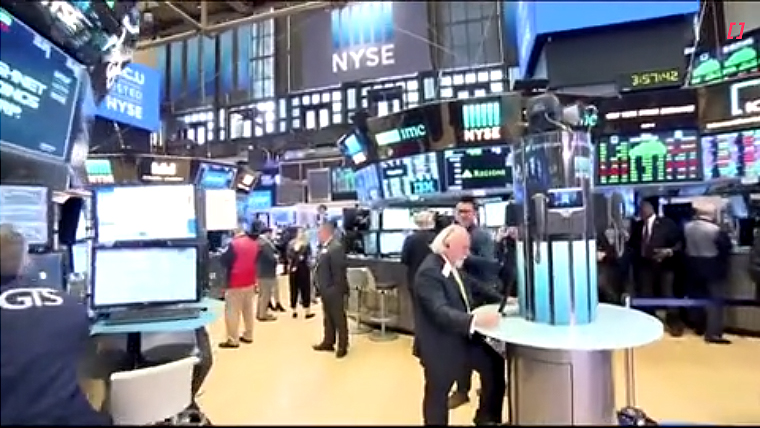
Markets are trading in the afterglow of President Trump’s chat with the Russian and Ukrainian Presidents to begin negotiations to end the war between Russia and Ukraine. Other market moving events have been the US PPI report, which was stronger than expected but with weak components that feed into the more important PCE deflator, and Trump’s forthcoming announcement on reciprocal tariffs. Equity markets are stronger, global rates are lower, and most currencies are stronger against the USD, although the NZD and AUD have lagged the move.
Overnight, President Trump indicated a forthcoming tariff announcement, posting on Truth Social “THREE GREAT WEEKS, PERHAPS THE BEST EVER, BUT TODAY IS THE BIG ONE: RECIPROCAL TARIFFS!!! MAKE AMERICA GREAT AGAIN!!!” He will be speaking on this topic just after we go to print at 7am NZT. CNBC reported that the new tariffs would not take effect immediately, which the market is taking some comfort from, as it allows plenty of time for negotiation for countries to take measures to avoid the tariffs.
The Euro Stoxx 600 index closed up 1.1% to a fresh record high, with positive market sentiment from hope that the war between Russia and Ukraine can end soon, and no seemingly imminent reciprocal tariffs. European gas futures are down around 12% over the past two trading sessions, unwinding some of the rapid increase over recent months on tight supply/demand conditions. An end to the war would result in much lower gas prices from here. The S&P500 index is up ½% in early afternoon trading.
US PPI inflation data were stronger than expected, largely driven by revisions to prior data. The PPI ex food and energy index rose 0.3% m/m, in line with consensus, but revisions took the annual increase up to 3.6%, an upside surprise of three-tenths. However, the PPI components that feed into the Fed’s preferred PCE deflator measure of inflation were on the soft side. Pantheon Macroeconomics predicts the core PCE deflator rose 0.3% m/m, which would take the annual increase down from 2.8% to 2.6%. This is a lower figure than feared after yesterday’s strong CPI figures. Initial jobless claims continue to largely track sideways, consistent with steady state labour market conditions.
The PPI report drove much lower US Treasury yields, unwinding a lot of the move in the aftermath of yesterday’s CPI report. The 2-year rate is down 4bps to 4.31% while the 10-year rate is down 8bps to 4.54%. European 10-year rates are down in the order of 5-8bps.
UK GDP data were stronger than expected, with a 0.4% m/m lift in December resulting in a quarterly increase of 0.1%, better than the 0.1% contraction expected. Still, with flat growth in Q3, the second half performance for the economy was poor, driven by weaker domestic private demand – in Q4, household spending was flat while business investment fell 3.2%.
There have been some gyrations in the currency market, driven by the market moving events noted. The net result is a weaker USD, with the DXY index down ½% on the day. Lower global rates have supported the yen, seeing it outperform, while the stronger GDP data supported GBP. Net movements in NZD, AUD and EUR have been small.
The NZD has been confined to a 0.5625-0.5660 range (rounded) and currently sits at 0.5655, little changed over the day. AUD trades just below 0.63 and NZD/AUD is little changed at 0.8985. The NZD is modestly weaker on the other key crosses, with NZD/GBP making a move down towards 0.45 and NZD/EUR down at 0.5420.
In the domestic rates market, yields were higher in early trading yesterday in response to the previous night’s offshore bond sell-off, before grinding lower through the rest of the day, with some cross-market outperformance. NZGB yields were little changed at the very long end of the yield curve, and up to 3bps higher around the belly of the curve. The 10-year rate rose just 1bp to 4.66%. Swap rates rose 2-4bps.
Domestic economic data were market friendly. Electronic card transactions were flat in January, with the retail component down 1.6% m/m, both following unusual strength in December. The overall trend still looks consistent with weak spending. The RBNZ’s survey of expectations showed lower inflation expectations for 2, 5 and 10-years ahead, with the 2-year ahead figure falling 6bps to 2.06%, all three measures close to the Bank’s 2% target.
In the day ahead, the NZ manufacturing PMI and monthly price indicators are released. US retail sales is the key global release, where the market expects lower auto sales to drag down the headline, while looking for modest 0.3% m/m growth in core sales.




We welcome your comments below. If you are not already registered, please register to comment.
Remember we welcome robust, respectful and insightful debate. We don't welcome abusive or defamatory comments and will de-register those repeatedly making such comments. Our current comment policy is here.